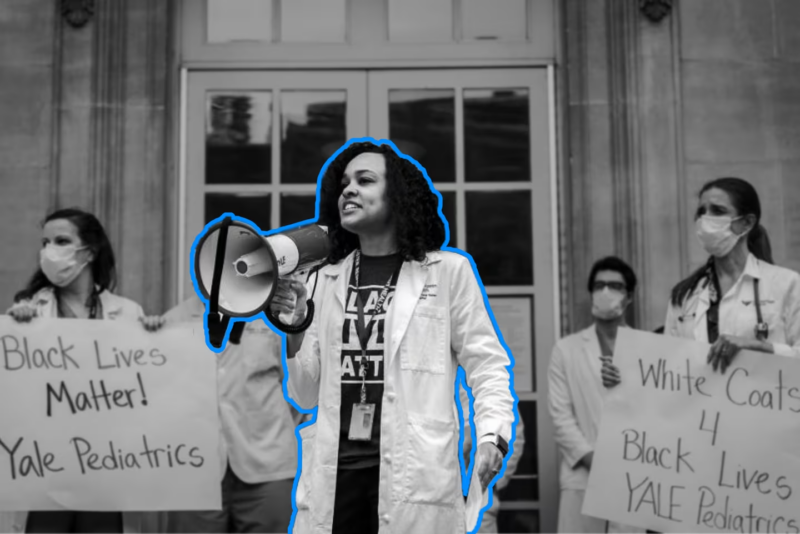Opinion: A patient called me a racial slur. Unfortunately, my experience is universal.
Share
Explore Our Galleries
Breaking News!
Today's news and culture by Black and other reporters in the Black and mainstream media.
Ways to Support ABHM?
By Amanda Joy Calhoun, Boston Globe
Racism from patients is a violent rite of passage for Black doctors. So are the excuses and dismissals from White colleagues.

About a year ago, a patient called me a “nigger” for the first time.
I was working an extra weekend shift as the only doctor on-call. It was a sunny day in New England, and seemingly calm. Until it wasn’t.
“Code gray. Code gray,” announced the neutral voice through the hospital speakers. “Code gray” signified a behavioral emergency. A patient was at imminent risk of harming themselves or others. Or already had. My work phone rang. “Dr. Calhoun, we need you in the adolescent unit,” a nurse said. I was already on my way.
The patient was a red-headed teenager. For several weeks he’d exhibited severe behavioral problems during his hospitalization. He’d just broken a window with his fist because playground time was over and he did not want to come back inside. A crowd of mental health staff, including psychiatric nurses and mental health techs, gathered around him. They took turns attempting to de-escalate the patient as he hurled out insults and curse words in return.
I approached him, smiling: “Hello, I’m Dr. Calhoun—”
“Get away from me, you nigger,” he hissed, nursing his bloody wrist.
The all-White staff, who moments before had been firm about setting behavioral limits with the patient, were silent. I held my ground, and my deep brown eyes met his bright green ones. “I will not tolerate racism in this unit, and I expect an apology,” I said, resolutely. I continued to care for the patient, but I felt demeaned in a way that curse words and rude language — both common in hospitals — had never accomplished.
Read more about the prevalence and impacts of racism in American medicine.
In her piece, Dr. Calhoun mentions “weathering,” the accumulation of stress from exposure to racism.
Get more Black culture news here.









Comments Are Welcome
Note: We moderate submissions in order to create a space for meaningful dialogue, a space where museum visitors – adults and youth –– can exchange informed, thoughtful, and relevant comments that add value to our exhibits.
Racial slurs, personal attacks, obscenity, profanity, and SHOUTING do not meet the above standard. Such comments are posted in the exhibit Hateful Speech. Commercial promotions, impersonations, and incoherent comments likewise fail to meet our goals, so will not be posted. Submissions longer than 120 words will be shortened.
See our full Comments Policy here.